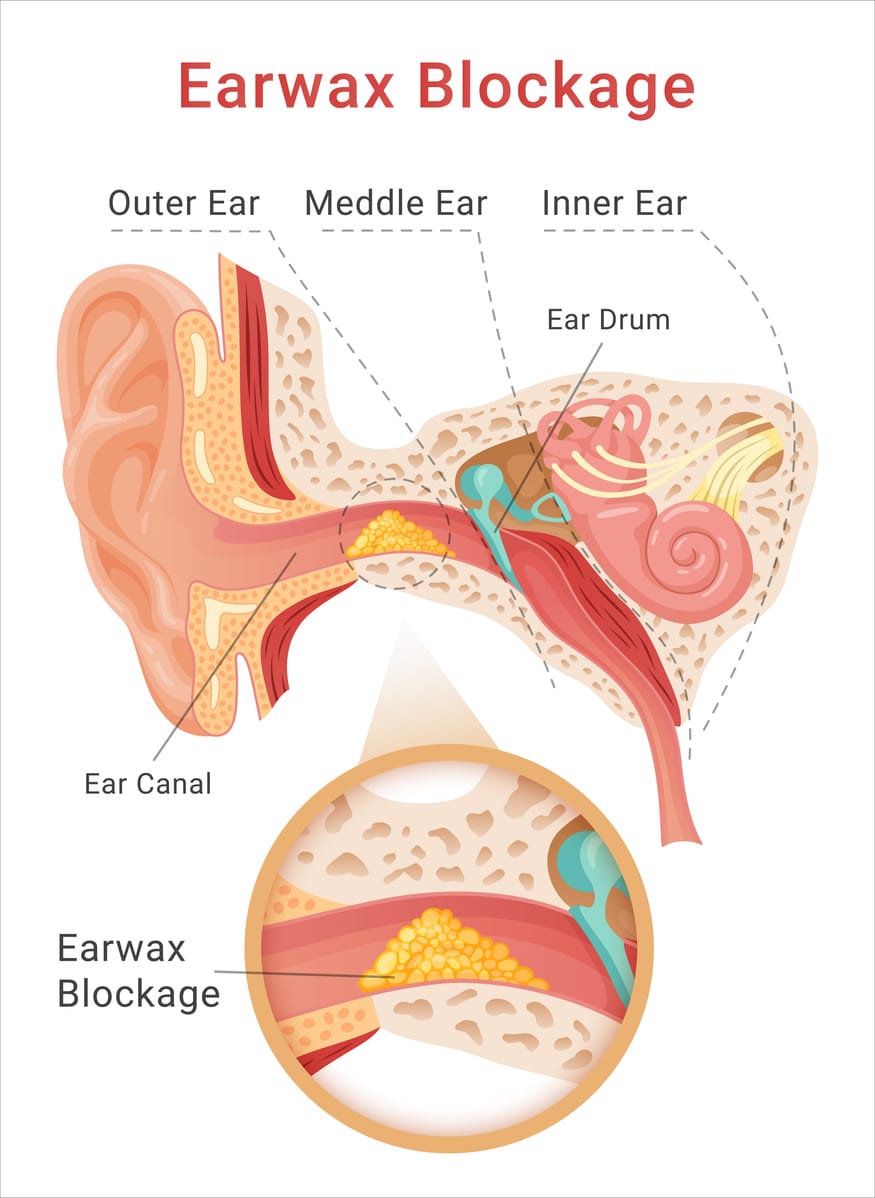While earwax might not be the first thing on our minds when we think about personal health and hygiene, this seemingly inconsequential substance plays a pivotal role in maintaining your ear health.
Understanding the importance of earwax and managing it safely is crucial in preventing potential harm to your ears.
How Does Earwax Protect You?

Earwax is more than just a sticky substance in your ear canal; it’s a critical component of your body’s defense mechanism. Much like how mucus protects the nose and throat by trapping germs and bacteria, earwax performs a similar function for the ear. It not only keeps germs at bay but also catches dirt and dust, expels dead skin cells, waterproofs the ear canal and prevents your ears from drying out.
Recognizing When Earwax Removal Is Necessary
In most cases, our bodies do an excellent job of self-regulating earwax production and removal. However, there are times when excess earwax can accumulate due to factors like trauma, scar tissue development or having a significant amount of ear hair. This buildup, if left unaddressed, can lead to blockages that may cause symptoms including but not limited to:
- Ear infections
- Tinnitus
- Temporary hearing loss
- Dizziness
- Itchiness
- A feeling of fullness in the ear
- Hearing aid malfunction
Experiencing symptoms of impacted earwax signals a need for professional evaluation. An ear, nose and throat (ENT) specialist can assess the situation accurately and recommend the best course of action to alleviate any discomfort or potential risks.
Tips for Safe Earwax Management
The cardinal rule for earwax management is to avoid removing it at home without professional guidance. If your ENT specialist recommends regular at-home cleanings due to excess wax production, they may give you a few tips, including:
- Don’t put anything into the ear canal. Inserting items like cotton swabs or hairpins into your ears can be damaging. These objects may push the wax deeper or cause permanent harm to the ear canal.
- Avoid home remedies. Techniques such as ear candling or vacuum kits pose risks of burns and other injuries. They’re best avoided.
- Opt for approved cleaning kits. If your ENT specialist suggests regular cleaning, use a provider-approved kit that includes dissolving drops and an ear bulb syringe.
Before attempting any form of earwax removal, always consult your ENT specialist. They can provide advice and ensure your ear health is not compromised. Contact Alpine Ear Nose & Throat PC today to make an appointment with one of our specialists.